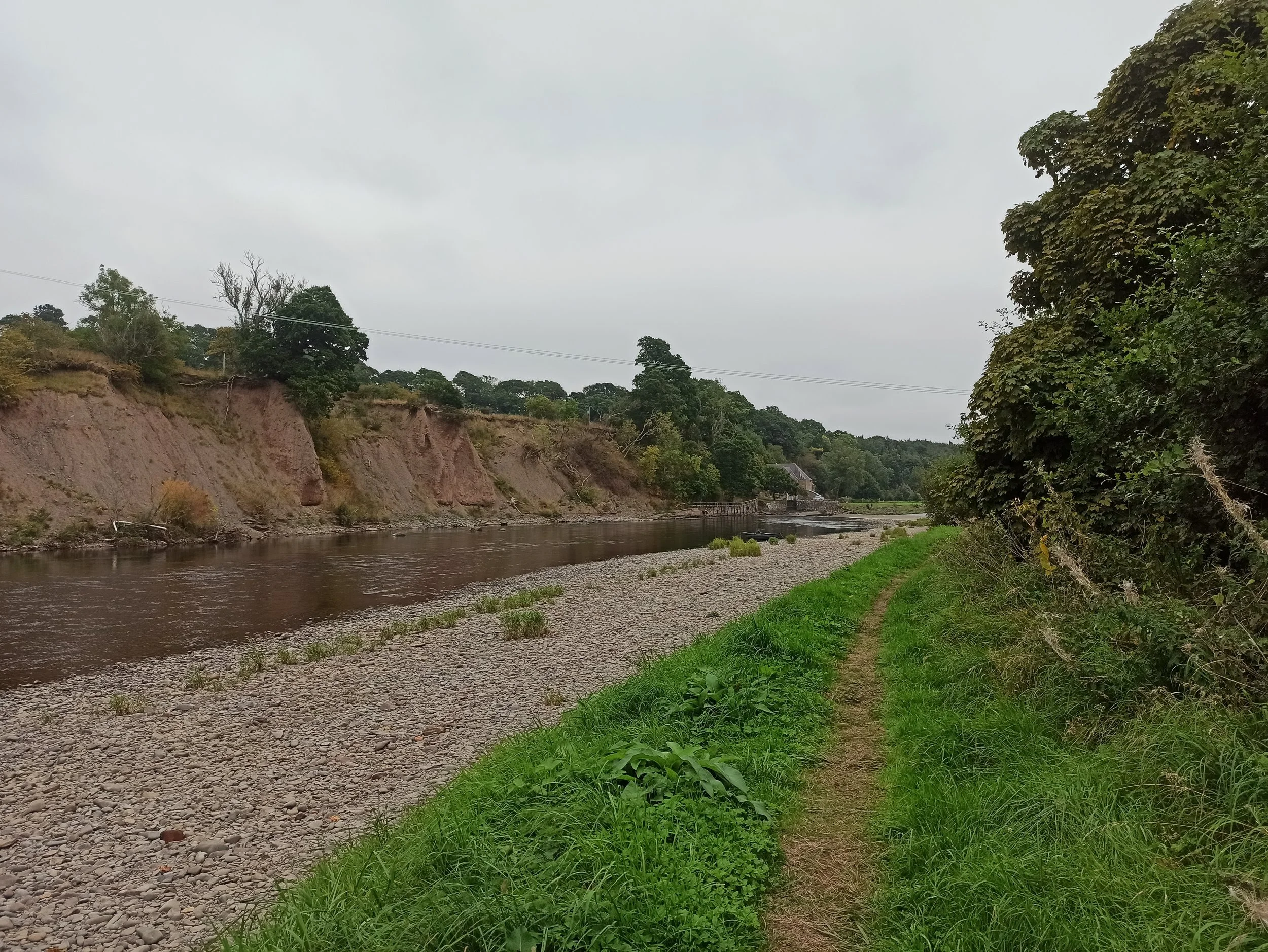River Tweed
/By Fiona M. Jones
Whose woods these are I think I know,* or at least whose woods these were, but the river flowing down below cares not whose land is whose, not yet whose trees are these and whose are those.
I’ve always wondered why people in the past would use a river as a boundary between nations or territories. They must have been a little shortsighted, or else fond of gambling, for rivers move and change course, encroaching into one bank and leaving fresh tracts of flood-plain on the other. They spread and braid, creating islands and rejoining them to land. You could win or lose acres of woods or farmland in a single week of rain and landslips.
The borderlands between England and Scotland were always contested ground, bearing medieval names like Camptown, Morebattle, Castlecraig, Skirmish Hill, and the Debatable Lands to the west. By the time of Robert Burns, the River Tweed had become the national border. On a long dark night of autumn rainstorms, England might win a field or two, while farther along the river, Scotland extended its ground, all without the shedding of blood. Nowadays the border is fixed, a little to the south of the Tweed’s meanderings along most but not all of its length. It’s only farm-fields, woods or fishing-groundsthat are gained or lost when the river changes course.
That’s what’s happening here, upstream from the Mertoun Bridge near the village of St Boswells. The river winds like a snake, its outer curve biting into the steep red-earthy northward bank, where the sliding soil falls into the river and washes along, to help build land downstream.
The trees at the top of the bank stand straight for as long as they can, gripping with their roots the loosening reddish dirt, slowing its erosion. But erosion prevails in the end. Undermined, one tree after another tilts sideways, half its roots exposed and clawing into air. Inch by inch it loosens until the crumbling ground gives way and drags the tree into the river. The line of trees is thinning like an army on the losing side. The owner of this land will plant young trees behind these, delaying but never preventing the river’s advance. The river will follow its own rules, swallowing fences, houses and pathways, as well as cliffs and trees. Ignoring our boundaries, trespassing on our carefully-mapped properties.
*Robert Frost, “Stopping By Woods”.
Fiona M Jones writes short dark fiction, nature-themed CNF and sometimes poetry. Her work is published in literary magazines and anthologies everywhere except Antarctica. Fiona's website is https://fionamjones.wordpress.com/ and her opinion column is on https://www.vineleavespress.com/climbing-out-of-the-box.


